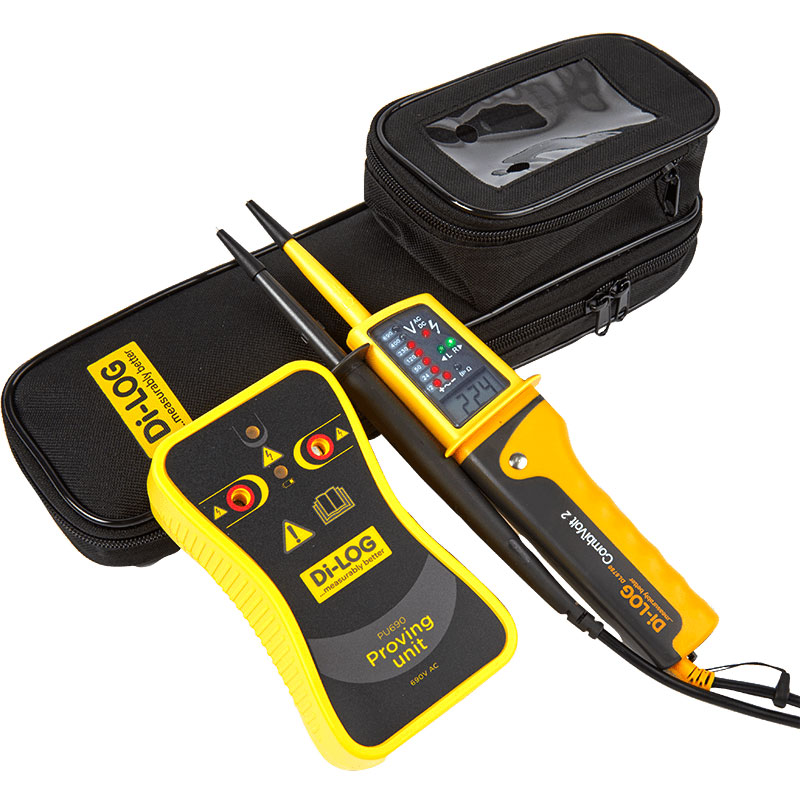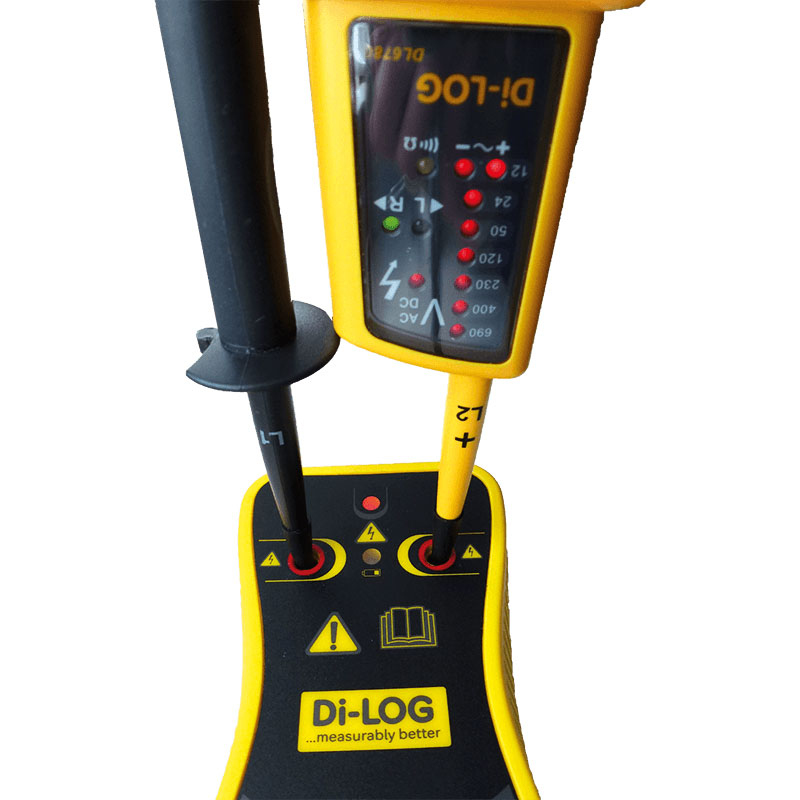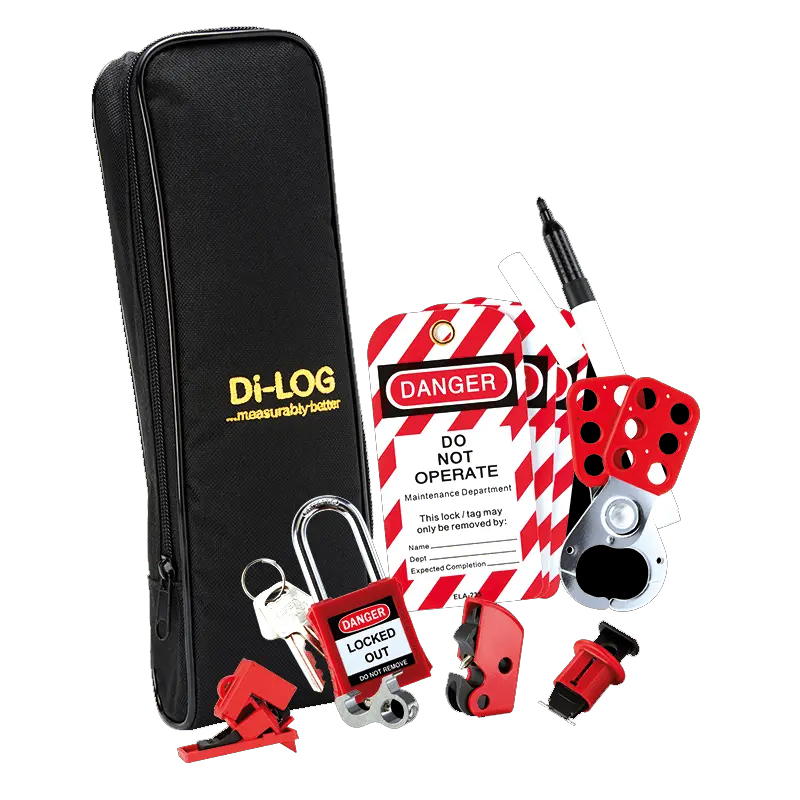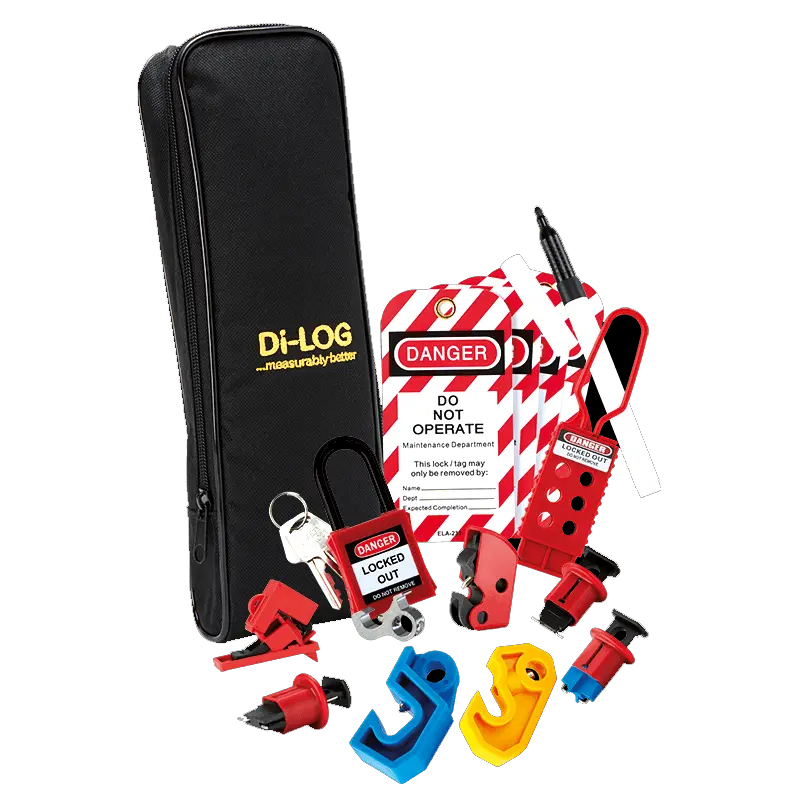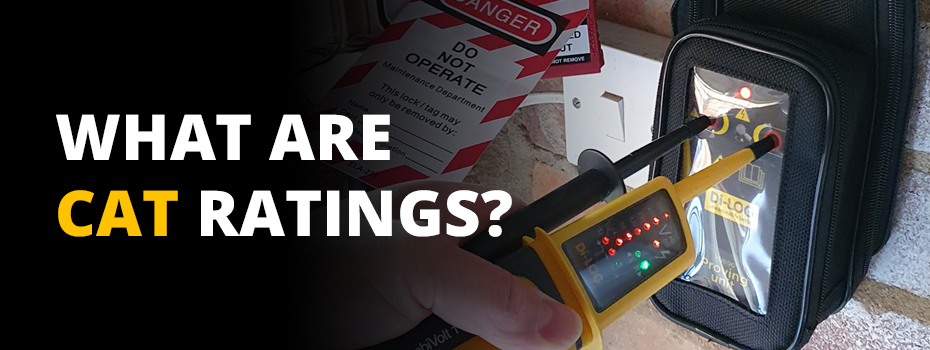
In summary, CAT ratings are overvoltage categories; they are safety ratings that indicate the types of electrical environments in which test and measurement instruments can be safely used. Understanding these categories is crucial to ensuring that you select the correct tool when working on an electrical installation.[1]
Quick Links
- Why Are CAT Ratings Important?
- What’s the Difference Between CAT Ratings?
- Work Safely
- Further Information
Why Are CAT Ratings Important?
Simply, to protect yourself against electric shocks and arc blasts caused by high-energy transients. Arc blasts injure more people every year than electric shocks. However, both disasters can be averted by ensuring you use an electrical test and measurement instrument that is properly insulated and equipped to deal with the energy of overvoltage transients likely to occur in the distribution system. The more complex the distribution system and loads, the more likely you are to encounter high-energy transient overvoltages.
What’s the Difference Between CAT Ratings?
CAT ratings are overvoltage categories that denote the instrument’s resistance to high-energy transients and its ability to withstand them.
The CAT number refers to the power of the electrical environment and the energy of the transients likely to be encountered in that circuit; the greater the CAT number the more resistance the meter provides, making it suitable for use on higher power circuits with higher energy transients. For instance, an instrument with a CAT III rating is resistant to higher energy transients than an instrument with a CAT II rating.
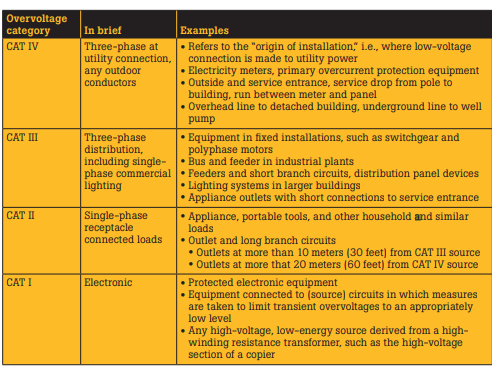
The voltage rating that follows the CAT number indicates the tester’s ability to withstand transients. The higher the voltage the better the tester is at withstanding transients. For example, a CAT III 1000V meter offers better protection than a CAT III 600V meter. It is important to note that voltage ratings are only directly comparable when instruments share the same CAT category. For instance, a CAT II 1000V tester will offer greater protection than a CAT II 600V tester, but it will not offer as much protection as a CAT III 600V tester despite having a higher voltage rating.
Work Safely
Making sure that you’re using a tester with an appropriate overvoltage rating is just one of the precautions that must be taken to ensure you are working safely. You should also use appropriate PPE, for example, insulated gloves, boots, mats, safety goggles, and/or a face shield; follow proper measurement protocols; and observe correct safe isolation and lockout tag-out procedures.
Read more about Safe Isolation
To help you maintain compliance with safe isolation and lockout tag-out regulations, PASS Ltd stocks DiLog’s DLPK9780 and DLPK6790 Safe Isolation Kits which can be bought with DiLog's DLL0C3/ DLL0C4 Lockout Kits.
The aforementioned safe isolation kits include a DiLog DL6780 CombiVolt 1 or DL6790 CombiVolt 2 Voltage and Continuity Tester, PU690 690V AC Proving Unit, and a bespoke carrying pouch. The DiLog PU690 690V Proving Unit is the only proving unit on the market to offer a CAT II 750V safety rating; it can test high- and low-impedance instruments making it suitable for use with voltage testers, like DiLog’s CombiVolt Testers, and multimeters.
DiLog's DLL0C3 18th Edition Professional Lockout Kit and DLL0C4 18th Edition Expert Lockout Kit include an array of padlocks, hasps, lockout devices, and labels perfect for implementing effective lockout tag-out procedures in the workplace.
Further Information
Please contact our Sales team on 01642 931 329 or via our online form for help and advice regarding our eclectic range of safe isolation and lockout tag-out products, including DiLog’s DLPK6780 and DLPK6790 Safe Isolation Kits.
For a detailed explanation of overvoltage (CAT) categories, please download Fluke’s application note, ABCs of multimeter safety.
[1] All the information for this blog was gathered using the following sources:
- Clint DeBoer, ‘What Are Electrical Measurement Categories (CAT III, CAT IV, ETC)’, Protool Reviews, last accessed 23 September 2021
- Fluke, ABCs of multimeter safety: Multimeter safety and you, last accessed 23 September 2021


